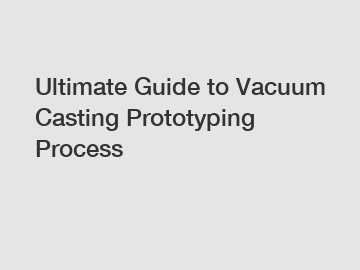What Are The Key Design Considerations for Plastic Injection Molding?
https://www.wintech-t.com/productstags/china-rapid-injection-molding-company.html
Plastic injection molding is a widely used manufacturing process that allows for the mass production of intricate plastic parts with high accuracy and consistency. However, designing parts for injection molding requires careful consideration of various factors to ensure that the final product meets the required specifications and can be produced efficiently. In this article, we will explore the key design considerations for plastic injection molding.
Material Selection
The choice of material is critical in plastic injection molding as it determines the part's physical properties, durability, and resistance to environmental factors. Different materials have different shrinkage rates, flow properties, and cooling rates, which can affect the part's dimensional accuracy and surface finish. Therefore, it is essential to select the appropriate material for the part's intended application, taking into account factors such as temperature, chemical exposure, and mechanical stresses.
Part Geometry
The geometry of the part is another critical factor in injection molding design. The part's shape, size, and complexity can affect the mold's design, filling, packing, and cooling processes. For example, parts with thin walls or sharp corners may require specialized molding techniques to avoid defects such as warpage, sink marks, or short shots. Similarly, undercuts or complex shapes may require additional mold components, such as sliders or lifters, to enable proper ejection.
Draft Angles and Wall Thickness
To facilitate the ejection of the part from the mold, it is crucial to include draft angles in the part's design. Draft angles are the tapers added to the part's walls, allowing it to release from the mold without damage. A minimum draft angle of 1-2 degrees is recommended for most parts, although this can vary depending on the part's size and complexity.
See also:Carbon Fiber Telescopic Pole: The Ultimate Lightweight and Sturdy Solution
Benefits of Flexible Metal Conduit for Water Protection
Roller Contact Bearing: The Backbone of Mechanical Efficiency
Benefits of Using a High Pressure Washer Nozzle
What Is a Collet Used for?
The Most Precise Metal Casting: Achieving Unparalleled Accuracy in Manufacturing
Cylindrical Door Lock: Ensuring Security and Convenience
Wall thickness is another important consideration in injection molding design. Parts with uniform wall thickness are easier to mold, fill, and cool, resulting in a more consistent part with reduced warpage and sink marks. However, parts with varying wall thickness may require special consideration to ensure that the plastic flows uniformly and adequately fills all areas of the mold.
Gate Design
The gate is the point at which the molten plastic enters the mold cavity. The design of the gate is critical as it affects the part's filling, packing, and cooling processes. Improper gate design can result in incomplete filling, flow marks, or visible gate marks on the part's surface. There are various types of gates, including edge gates, sub gates, and hot runners, each with its advantages and limitations. The choice of gate design depends on the part's geometry, material, and production requirements.
Mold Design
The mold is the heart of the injection molding process, and its design plays a crucial role in the part's quality and consistency. The mold consists of two halves, a cavity and a core, which are precision machined to form the part's shape. The mold's design should consider factors such as part geometry, wall thickness, draft angles, gate location, and ejection method. Proper mold design can improve part quality, reduce cycle time, and increase production efficiency.
Conclusion
Plastic injection molding is a complex manufacturing process that requires careful consideration of various factors to produce high-quality parts consistently. Design considerations such as material selection, part geometry, wall thickness, draft angles, gate design, and mold design are critical to ensuring a successful injection molding process. By paying attention to these key factors, manufacturers can produce plastic parts that meet the required specifications, are durable, and cost-effective. We are a plastic injection molding supplier. If you are interested in our products, please contact us now!
8 Different Types of Water Valves Used in Home Plumbing
Maximizing Efficiency and Precision: The High Pressure Control Valve
Everything you need to know about Single Roller for Door
What’s a Throwout Bearing? We Tell You Here!
Maximizing Your Space with Aluminum Window and Door Accessories
Types of Scaffolding Fittings: Enhancing Construction Stability
Mastering the Klindex Grinder: A Comprehensive Guide









